Eastern Oregon’s high desert landscape is like nature’s boot camp, where only the toughest plants survive the brutal temperature swings and bone-dry summers. You’ll discover that native species have mastered this challenging environment through remarkable adaptations, developing deep root systems that can extend 10-15 feet underground and waxy coatings that prevent moisture loss. These resilient survivors don’t just endure the harsh conditions—they actually transform barren terrain into vibrant ecosystems that’ll surprise you with their hidden potential.
Contents
- 1 Eastern Oregon’s Harsh Climate Challenges
- 2 Desert Wildflowers for Color
- 3 Hardy Native Eastern Oregon Trees
- 4 Drought-Tolerant Eastern Oregon Shrubs
- 5 Selecting the Right Native Plants for Your Garden
- 6 Frequently Asked Questions
- 6.1 What Is the Best Time of Year to Plant Native Species?
- 6.2 How Much Water Do Established Native Plants Need During Summer?
- 6.3 Where Can I Purchase Native Eastern Oregon Plant Seeds Locally?
- 6.4 Do Native Plants Require Special Soil Preparation or Fertilizers?
- 6.5 How Long Does It Take for Native Plants to Become Established?
Eastern Oregon’s Harsh Climate Challenges
While Eastern Oregon’s high desert landscape captivates visitors with its stark beauty, the region presents formidable challenges that test even the hardiest native plants. You’ll encounter temperature swings exceeding 80°F between summer highs of 105°F and winter lows reaching -26°F. The cold semi-arid climate delivers mere 0.58″ to 1.16″ of precipitation from March through June, creating severe drought stress. Additionally, you’re dealing with intense UV exposure from cloudless skies, sandy soils with poor moisture retention, and persistent 10 mph winds. The growing season lasts only 6.5 months from April to October, forcing plants to complete their entire life cycle in this compressed timeframe. Successful native plants require exceptional climate adaptation strategies and soil conservation techniques.
Desert Wildflowers for Color
Eastern Oregon’s desert wildflowers bring vibrant color to arid landscapes throughout the growing season, from early spring bloomers to summer’s spectacular lily displays and distinctive purple varieties. Early spring brings forth delicate blooms like sagebrush buttercup and yellow bell lily as temperatures begin to rise.
Desert Paintbrush (Castilleja Chromosa)
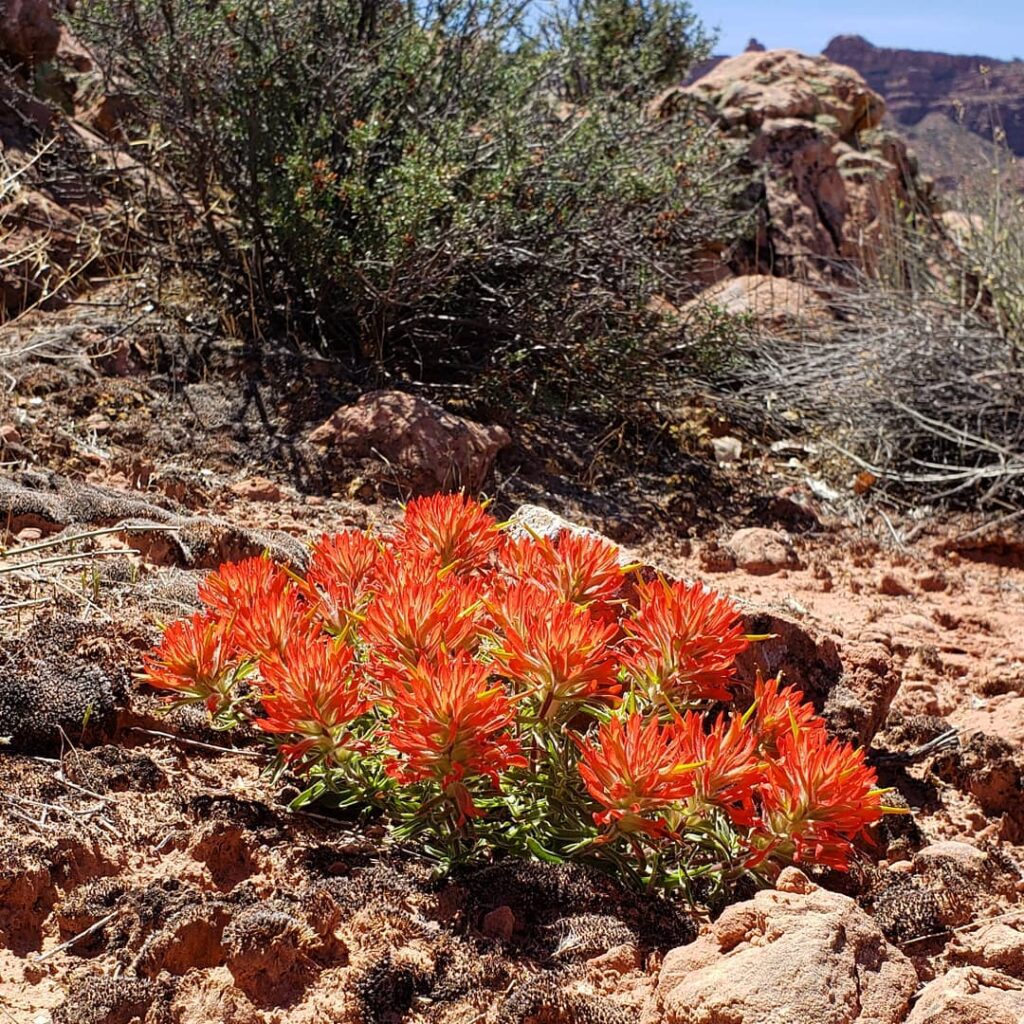
Desert Paintbrush (Castilleja chromosa) is a striking perennial wildflower native to Eastern Oregon’s high desert regions. Growing up to 1.5 feet tall with unbranched, greyish-green stems, this plant produces vibrant yellow to red inflorescences that create dramatic splashes of color in arid landscapes. The brilliant hues come from colorful bracts rather than the small flowers themselves.
This unique wildflower is classified as a hemiparasite, meaning it obtains nutrients by forming connections with neighboring host plants’ root systems. Found naturally in sagebrush meadows, dry scrub, and steppe environments at elevations of 3,000-7,200 feet, Desert Paintbrush blooms from May through August and serves as an important larval host for several butterfly species while supporting regional pollinators. The plant has an unusual ability to hyperaccumulate selenium from the soil, concentrating this trace element in its tissues.
- Hardiness: Zones 4-8, adapted to harsh high desert conditions
- Light: Full sun to partial sun
- Water: Low to moderate water needs, drought tolerant once established
- Soil: Well-draining, sandy or rocky soils, tolerates poor soils
- Fertilizer: None required, adapted to nutrient-poor conditions
- Pest/Disease Resistance: Generally resistant due to native adaptation
- Growth Rate: Slow to moderate, requires host plants for establishment
Desert Lupine (Lupinus Lepidus)

Desert Lupine (Lupinus lepidus) is a hardy perennial wildflower native to western North America’s high desert regions. This resilient plant produces characteristic lupine flower spikes from June through August, adding vibrant color to open sagebrush flats and rocky slopes. The species thrives in harsh conditions from lowland prairies to alpine ridges, making it an excellent choice for xeriscaping and native plant gardens in eastern Oregon’s challenging climate. These plants typically remain compact, with most individuals measuring less than 5 cm in diameter when fully mature.
- Hardiness: Zones 4-8, extremely cold tolerant, adapted to temperature extremes
- Light: Full sun, thrives in open areas with maximum sun exposure
- Water: Very low water requirements, drought tolerant once established, prefers dry conditions
- Soil: Well-draining, rocky, sandy, or volcanic ash soils; tolerates poor, nutrient-deficient conditions
- Fertilizer: None required, adapted to low-nutrient environments, excess fertility may harm growth
- Pest/Disease Resistance: High resistance, few known pest or disease issues in native habitat
- Growth Rate: Moderate, establishes slowly but forms long-lived colonies once mature
Desert Marigold (Baileya Multiradiata)
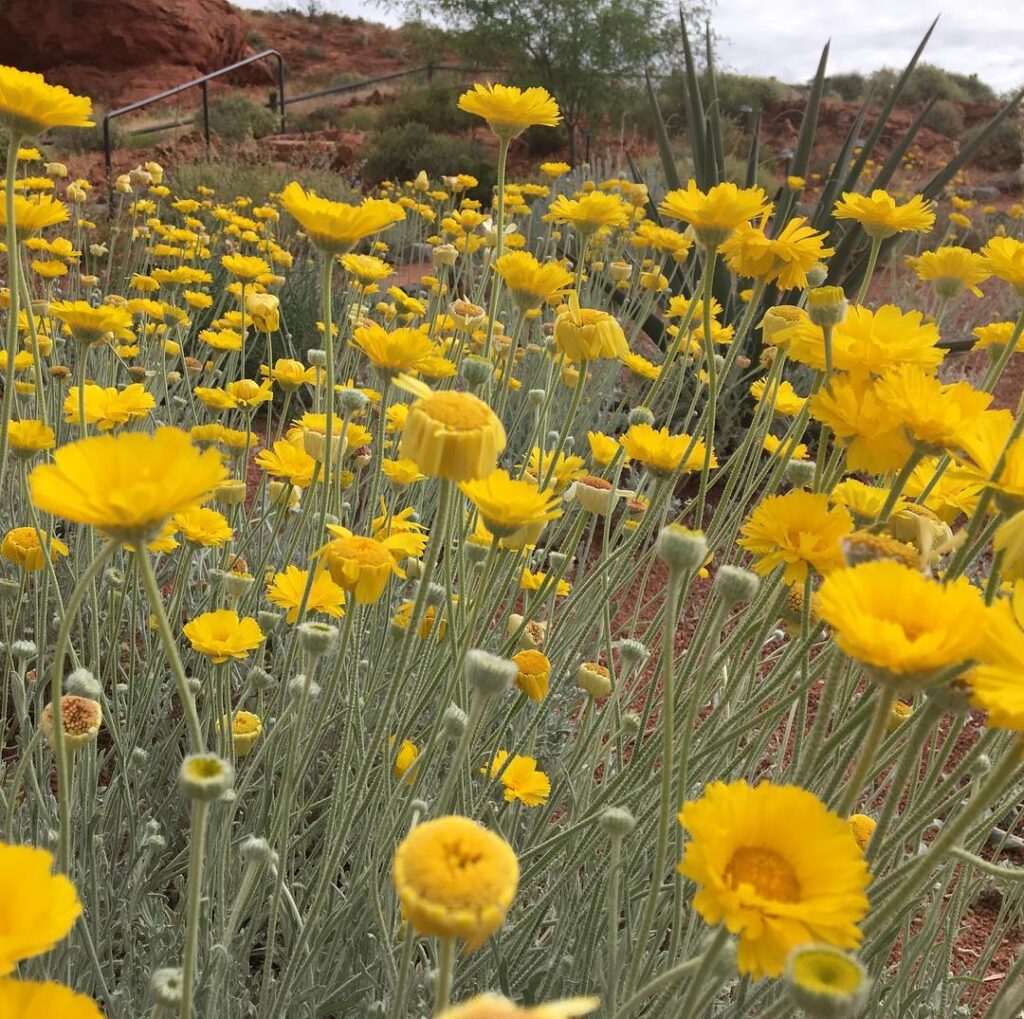
Desert Marigold is a compact perennial or annual herb native to the western US desert southwest, forming silvery-gray clumps 12-24 inches tall. This drought-adapted wildflower produces bright yellow, daisy-like blooms about 2 inches across from late winter through summer on tall, leafless stems. The plant’s lobed leaves are covered in fine woolly hairs, giving it excellent heat and drought tolerance while creating an attractive textural element in xeriscaped gardens.
Short-lived but readily self-seeding, Desert Marigold thrives in Eastern Oregon’s High Desert conditions and provides valuable nectar for pollinators. Its intermittent blooming pattern and low maintenance requirements make it ideal for wildflower gardens, mass plantings, and southwestern-themed landscapes where it can form self-sustaining stands. The plant can form dense patches that create solid strips of yellow along desert roadsides.
- Hardiness: Adapted to extreme heat and cold of High Desert regions; semi-deciduous in response to drought or cold
- Light: Full sun exposure required
- Water: Very low water use; drought tolerant once established; overwatering causes crown rot
- Soil: Sandy, gravelly, or well-draining soils including caliche, loam, and clay loam; fast drainage essential
- Fertilizer: No fertilizers needed or recommended; thrives in poor soils
- Pest/Disease Resistance: Excellent resistance due to native adaptation to arid regions
- Growth Rate: Fast establishment with ready self-seeding; short-lived perennial lasting 3-5 years
Desert Evening Primrose (Oenothera)
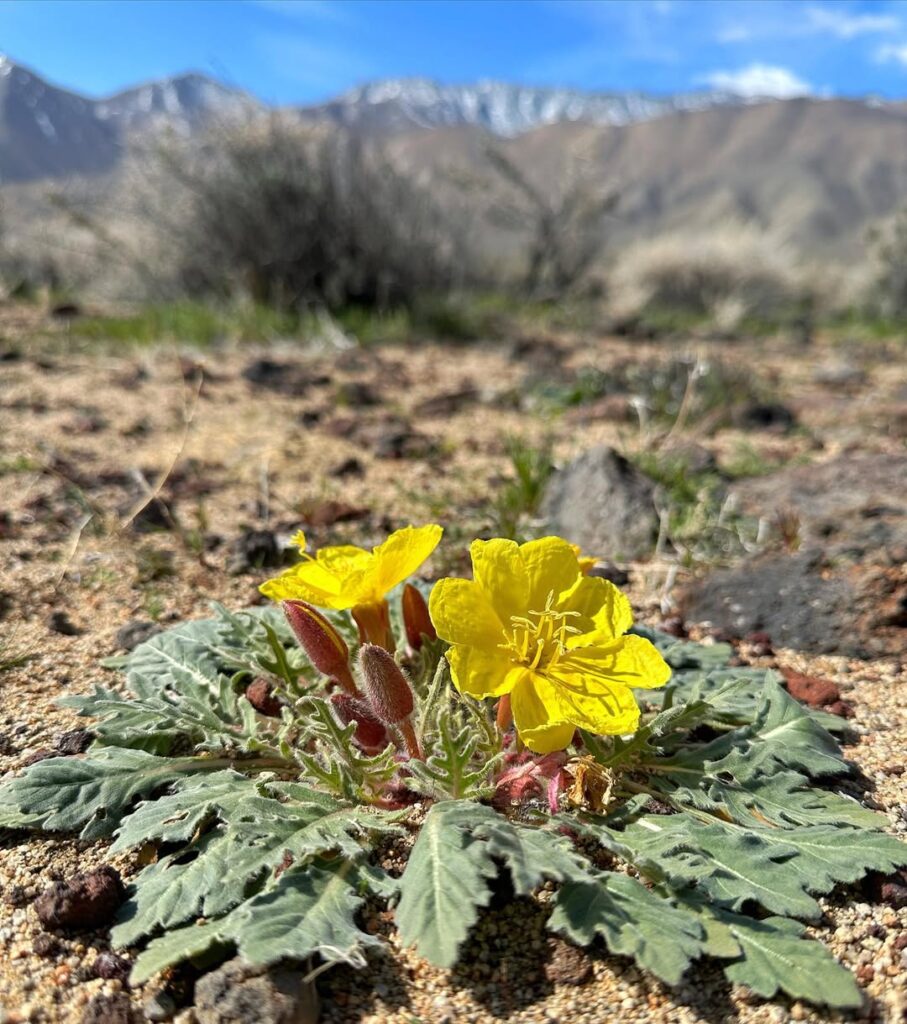
Desert Evening Primrose (Oenothera) brings delicate beauty to Eastern Oregon’s arid landscapes with its distinctive white petals that gracefully age to pink or rose-purple. This hardy perennial herb forms low, tufted mats that thrive in the region’s challenging desert conditions. Two varieties flourish here: the compact caespitosa with smaller blooms, and marginata featuring larger, more dramatic flowers with tubes reaching up to 14 cm long.
Perfectly adapted to high desert environments, this native wildflower excels in xeriscaping projects and natural habitat restoration. Its drought tolerance and ability to colonize sandy areas make it invaluable for sustainable desert gardening, while its seasonal color display enhances native plant landscapes from valleys to high mountain elevations. The flowers produce a sweet scent and open in the evening hours, attracting nocturnal pollinators to the garden.
- Hardiness: Cold hardy in high desert conditions, grows above timberline
- Light: Full sun
- Water: Low water requirements, drought tolerant once established
- Soil: Well-drained sandy to gravelly soils, tolerates poor soil conditions
- Fertilizer: None required, adapted to nutrient-poor desert soils
- Pest/Disease Resistance: Excellent resistance due to native adaptation
- Growth Rate: Slow to moderate, forms spreading mats over time
Desert Beardtongue (Penstemon)

Desert Beardtongue (Penstemon) is a robust herbaceous perennial that grows 2-3 feet tall and wide, featuring distinctive tubular flowers with five stamens, including one bearded stamen that gives the plant its common name. The semi-glossy green leaves clasp the stems, while flowers bloom in colors ranging from deep blue and purple to bright pink and white, depending on the species. This native wildflower provides extended color from May through July and serves as an excellent pollinator plant for hummingbirds and butterflies.
Multiple species thrive in Eastern Oregon’s high desert conditions, including Desert Beardtongue (Penstemon pseudospectabilis) and region-specific varieties like Peck’s penstemon (P. peckii). These drought-tolerant perennials make excellent additions to rock gardens and xeriscaping projects, requiring minimal maintenance once established while providing essential habitat for local wildlife. The plants can tolerate elevations up to 6200 ft, making them well-suited for high desert environments.
- Hardiness: Adapted to high desert conditions with temperature extremes
- Light: Full sun to partial sun for ideal flowering
- Water: Low water requirements; drought-tolerant once established
- Soil: Dry, gravelly or rocky soil with excellent drainage required
- Fertilizer: None needed; adapted to poor desert soils
- Pest/Disease Resistance: Generally pest and disease free in appropriate conditions
- Growth Rate: Moderate growth rate with long-lived perennial habit
Hardy Native Eastern Oregon Trees
Eastern Oregon’s harsh high desert climate demands resilient native trees that withstand extreme temperatures, drought conditions, and minimal precipitation while thriving in diverse elevations and soil types. These native species are specifically adapted to local soil and climate conditions, making them essential choices for sustainable landscaping in the region.
Western Juniper (Juniperus Occidentalis)

Western Juniper (Juniperus occidentalis) stands as the dominant tree species across eastern Oregon’s non-montane landscape, often being the only tree across vast areas of the state. This hardy native reaches 13-32 feet in height with mature specimens developing single, erect stems up to two feet in diameter. The species demonstrates remarkable adaptability, evolving from needle-like juvenile leaves to scale-like adult leaves and producing blue-brown berry-like cones that mature over 18 months.
Despite its delicate appearance when young, Western Juniper exhibits exceptional longevity and toughness in the challenging high desert conditions. It functions as a climax species on rimrock and outcrops, thriving in all stages of progression within its range. The tree’s paradoxical nature shows fire susceptibility in youth but develops resistance with maturity, making it perfectly suited to eastern Oregon’s harsh environment. Western Juniper provides crucial ecosystem habitat for diverse wildlife, from chipmunks and ground squirrels that inhabit tree cavities to owls and hawks that hunt among the branches.
- Hardiness: USDA zones 4-8, extremely cold tolerant and adapted to high desert conditions
- Light: Full sun, thrives in open exposures with excellent light availability
- Water: Very drought tolerant once established, requires minimal supplemental irrigation
- Soil: Well-draining soils, tolerates poor, rocky, and alkaline conditions including rimrock and outcrops
- Fertilizer: None required, adapted to nutrient-poor native soils
- Pest/Disease Resistance: Excellent resistance to most pests and diseases in native habitat
- Growth Rate: Slow to moderate, extremely long-lived with gradual establishment
White Bark Pine (Pinus)
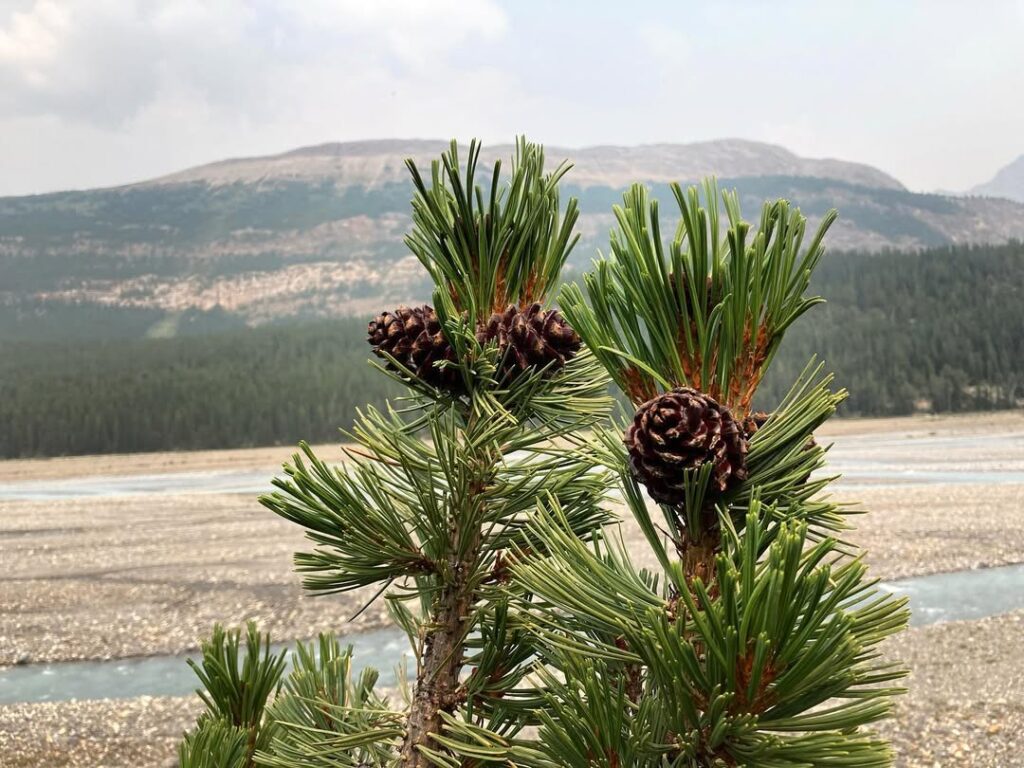
Whitebark Pine is a long-lived evergreen conifer native to mountainous regions, including eastern Oregon’s high elevation and subalpine environments. This hardy species typically reaches 40-60 feet in height and features distinctive blue-green needles grouped in bundles of five. The tree produces narrowly cylindrical, pitchy cones and develops characteristic grayish-brown, scaly bark at maturity.
As an important component of mixed-conifer forests, Whitebark Pine plays a significant seral role in forest succession, often establishing after disturbance events. The species provides essential wildlife habitat and food sources while contributing valuable straight-grained timber. Though resilient to harsh mountain conditions, it faces challenges from white pine blister rust and mountain pine beetle infestations. The needles are notably stiffer than those of Eastern White Pine, making field identification easier for botanists and foresters.
- Hardiness: USDA Zone 3, withstands cold snowy winters and harsh high-elevation conditions
- Light: Full sun preferred, tolerates partial shade during early growth stages
- Water: Moderate moisture requirements, intolerant of waterlogged conditions
- Soil: Well-drained soils preferred, adapts to various soil types, often found on slopes and ridges
- Fertilizer: No specific fertilizer requirements, adapted to natural mountain soils
- Pest/Disease Resistance: Vulnerable to white pine blister rust and mountain pine beetle infestations
- Growth Rate: Moderate in early years, becomes fastest-growing among regional conifers in sapling and pole stages
Quaking Aspen (Populus Tremuloides)
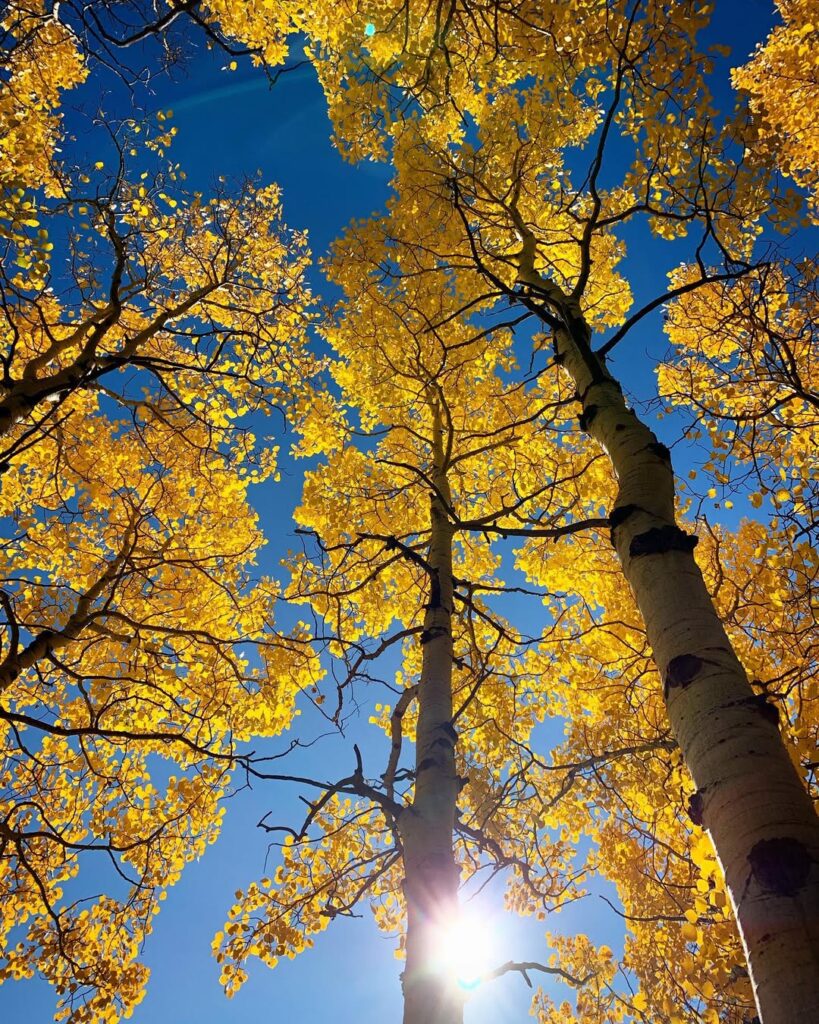
Quaking aspen is North America’s most widely distributed tree, extending from Alaska to northern Mexico. In Eastern Oregon, it grows in isolated groves scattered across basin and range country, including Steens Mountain and Hart Mountain. These fragile populations exist as “alpine islands” in the high desert, creating essential microhabitats in arid landscapes.
The species reproduces primarily through root sprouts, forming clone colonies where entire groves share a single root system. Named for leaves that tremble in the slightest breeze due to flattened petioles, quaking aspen is a relatively short-lived tree that plays an important ecological role in riparian zones and forest openings throughout Eastern Oregon’s challenging high desert environment. The tree features distinctive smooth greenish white bark that becomes darker with age, providing easy identification in the landscape.
- Hardiness: USDA Zone 1 (extremely cold-tolerant)
- Light: Full sun with minimal shade
- Water: High moisture requirements; thrives along streams and wetlands
- Soil: Prefers marshy, river bottom soils; grows on gravelly sites
- Fertilizer: Not typically required in natural settings
- Pest/Disease Resistance: Moderate; short-lived species
- Growth Rate: Moderate; forms clonal colonies through root sprouting
Ponderosa Pine (Pinus Ponderosa)
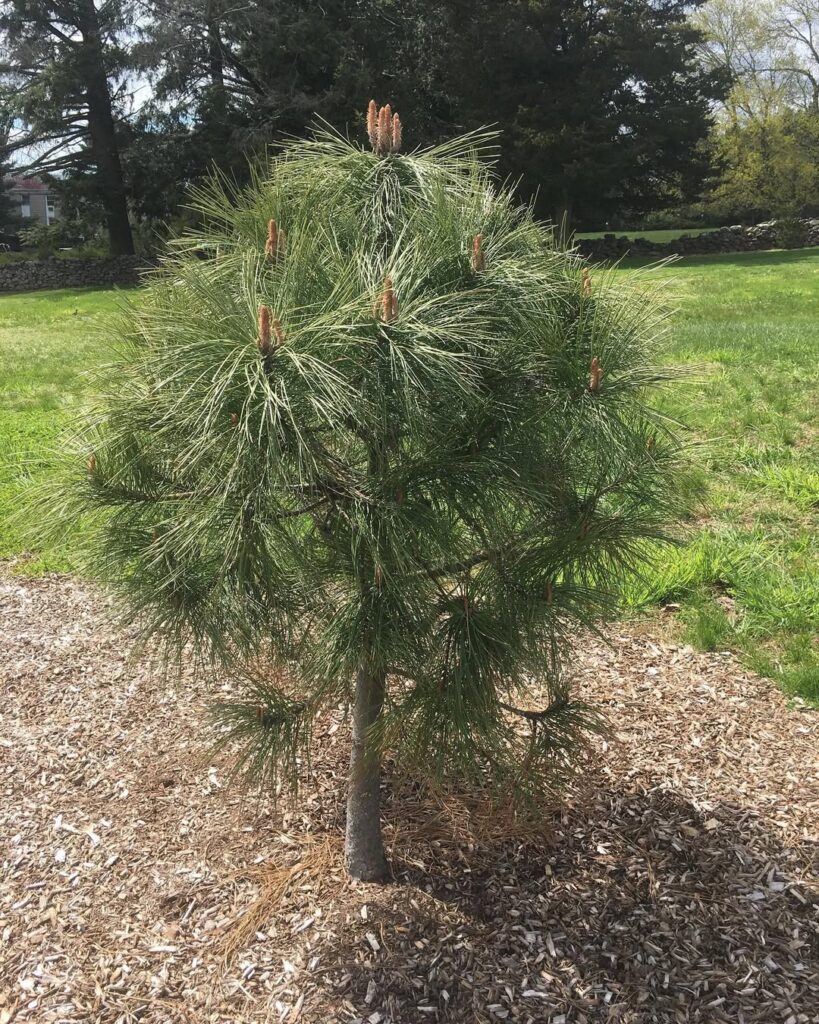
Ponderosa Pine is eastern Oregon’s most widespread native pine, thriving in the region’s challenging high desert conditions. These magnificent trees are easily recognized by their towering height, distinctive orange-brown puzzle piece bark, and long needles arranged in bundles of three. Exceptionally drought-tolerant and fire-adapted, they serve as keystone species in open woodlands and savannas throughout the Blue Mountains, Okanogan Highlands, and Columbia Basin.
Native peoples have long valued ponderosa pines for food, medicine, and materials, while modern applications include timber, erosion control, and drought-tolerant landscaping. With lifespans exceeding 500 years, these hardy giants provide essential wildlife habitat and soil stabilization in eastern Oregon’s driest conifer habitats. The understory beneath these pines comprises grasses and shrubs that support diverse wildlife habitats and prevent soil erosion.
- Hardiness: USDA zones 3-7; extremely cold and heat tolerant
- Light: Full sun; requires open conditions, intolerant of heavy shade
- Water: Low to moderate; drought-tolerant once established, prefers 15-30 inches annual precipitation
- Soil: Well-drained soils including volcanic pumice, sandy loams; tolerates poor, rocky soils
- Fertilizer: Generally not needed; adapted to nutrient-poor soils
- Pest/Disease Resistance: Good resistance when healthy; thick bark provides fire protection
- Growth Rate: Slow to moderate; reaches maturity over many decades
Rocky Mountain Maple

The Rocky Mountain Maple is a hardy native deciduous tree that thrives in Eastern Oregon’s challenging high desert conditions. Growing 4-30 feet tall depending on conditions, this adaptable species was first discovered by David Douglas in Oregon’s Blue Mountains in 1827. Found naturally between 2,800-9,000 feet elevation, it serves as an excellent choice for native landscaping projects.
This versatile maple provides exceptional ecological value while offering beautiful seasonal interest with its deeply lobed leaves and colorful fall foliage ranging from yellow to crimson. Its small yellowish-green flowers support early pollinators, while the distinctive winged fruits feed local wildlife. The species demonstrates remarkable adaptability to Eastern Oregon’s variable moisture conditions and temperature extremes. The tree shows exceptional tolerance to strong winds, making it particularly suited for exposed high desert locations.
- Hardiness: USDA Zone 4, withstands cold Eastern Oregon winters
- Light: Full sun to partial shade
- Water: Wet to dry soils; drought tolerant once established
- Soil: Adapts to poor soil quality, prefers moist mountain slopes
- Fertilizer: None required; thrives in native conditions
- Pest/Disease Resistance: Generally resistant with few issues
- Growth Rate: Moderate; easy to grow and maintain
Drought-Tolerant Eastern Oregon Shrubs
Eastern Oregon’s harsh climate demands resilient native shrubs that withstand drought conditions while providing year-round beauty, wildlife habitat, and low-maintenance landscaping solutions for high desert gardens. These hardy plants feature deep taproot systems that naturally prevent soil erosion while adapting to the region’s challenging environmental conditions.
Bitterbrush (Purshia Tridentata)

Bitterbrush (Purshia tridentata) is a drought-tolerant deciduous shrub native to the arid regions of eastern Oregon and western North America. This heavily branched shrub typically grows 3-4 feet tall and produces small yellow-white flowers from April to July. Its small, hairy leaves and waxy coatings minimize water loss, while deep taproots access moisture in dry soils.
Well-suited to harsh desert conditions, bitterbrush thrives in sandy, rocky, well-draining soils at elevations between 3,000-11,000 feet. It provides essential winter browse for wildlife and serves as a valuable nectar source for native bees. The plant exhibits distinct growth forms based on elevation, with multiple-stemmed, reclining plants common at higher elevations and single-stemmed, columnar plants at lower elevations. The plant’s exceptional drought tolerance and ability to survive in alkaline soils make it suitable for xeriscaping and habitat restoration projects.
- Hardiness: USDA zones 4-8, adapted to extreme temperature fluctuations and seasonal drought
- Light: Full sun exposure required for ideal growth and flowering
- Water: Low water requirements once established; drought-tolerant with deep taproot system
- Soil: Sandy, rocky, or well-draining soils; highly tolerant of alkaline conditions and calcium carbonate
- Fertilizer: No fertilizer needed; adapted to nutrient-poor desert soils
- Pest/Disease Resistance: Generally resistant to pests and diseases in natural habitat conditions
- Growth Rate: Slow to moderate growth rate, typically reaching 3-4 feet at maturity
Sagebrush (Artemisia Tridentata)
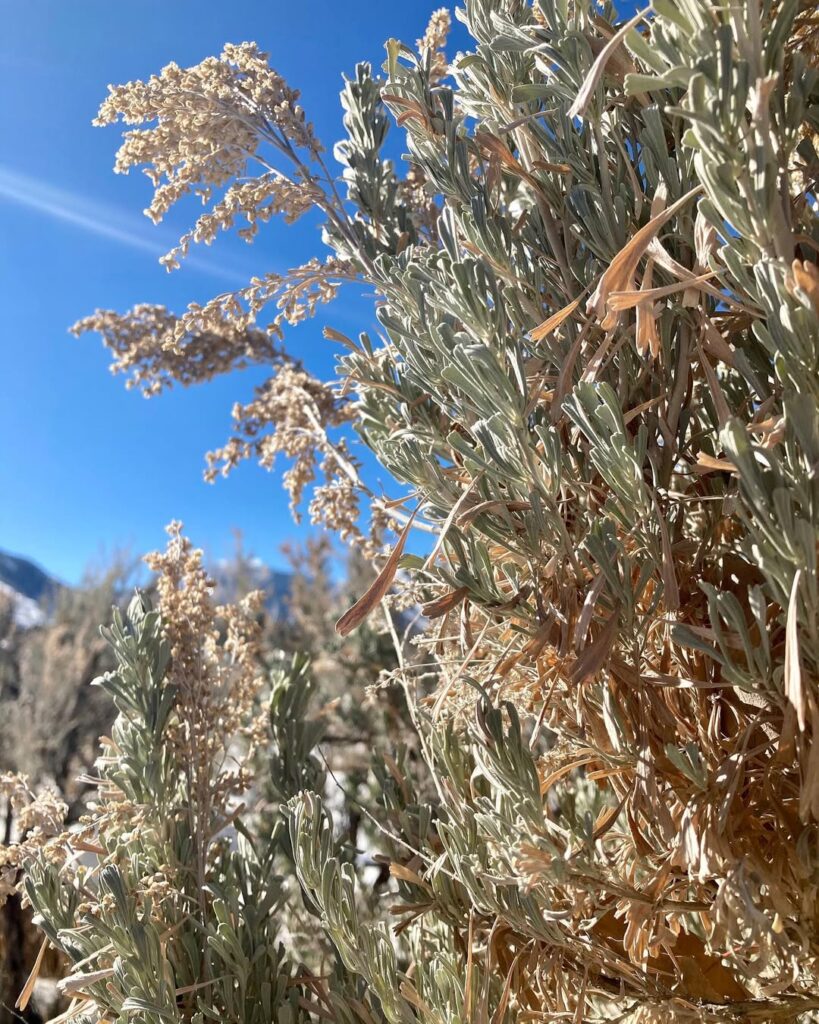
Sagebrush (Artemisia tridentata) is an aromatic shrub native to eastern Oregon’s high desert, distinguished by its characteristic three-lobed, wedge-shaped leaves. This keystone species dominates the Great Basin and Columbia Basin shrub-steppe ecosystems, growing at elevations from 100 to 7,000 feet. Several subspecies exist, each adapted to specific habitats from basin floors to mountain slopes.
As an essential component of high desert plant communities, sagebrush provides vital habitat and food for wildlife including sage grouse, pronghorn antelope, and mule deer. Despite being drought-tolerant, it requires 7-15 inches of annual precipitation and is not a true desert plant but rather a steppe resident. The plant produces small, yellowish flowers that develop into very small fruits.
- Hardiness: Cold hardy to USDA zones 4-8, adapted to high desert conditions
- Light: Full sun exposure required
- Water: Low to moderate water needs; 10-18 inches annual precipitation, mainly fall/winter
- Soil: Deep, well-drained soils preferred; tolerates alkaline and poor soils
- Fertilizer: No fertilization needed; adapted to nutrient-poor soils
- Pest/Disease Resistance: Generally resistant but vulnerable to invasive species competition
- Growth Rate: Slow to moderate growth rate once established
Serviceberry (Amelanchier Alnifolia)
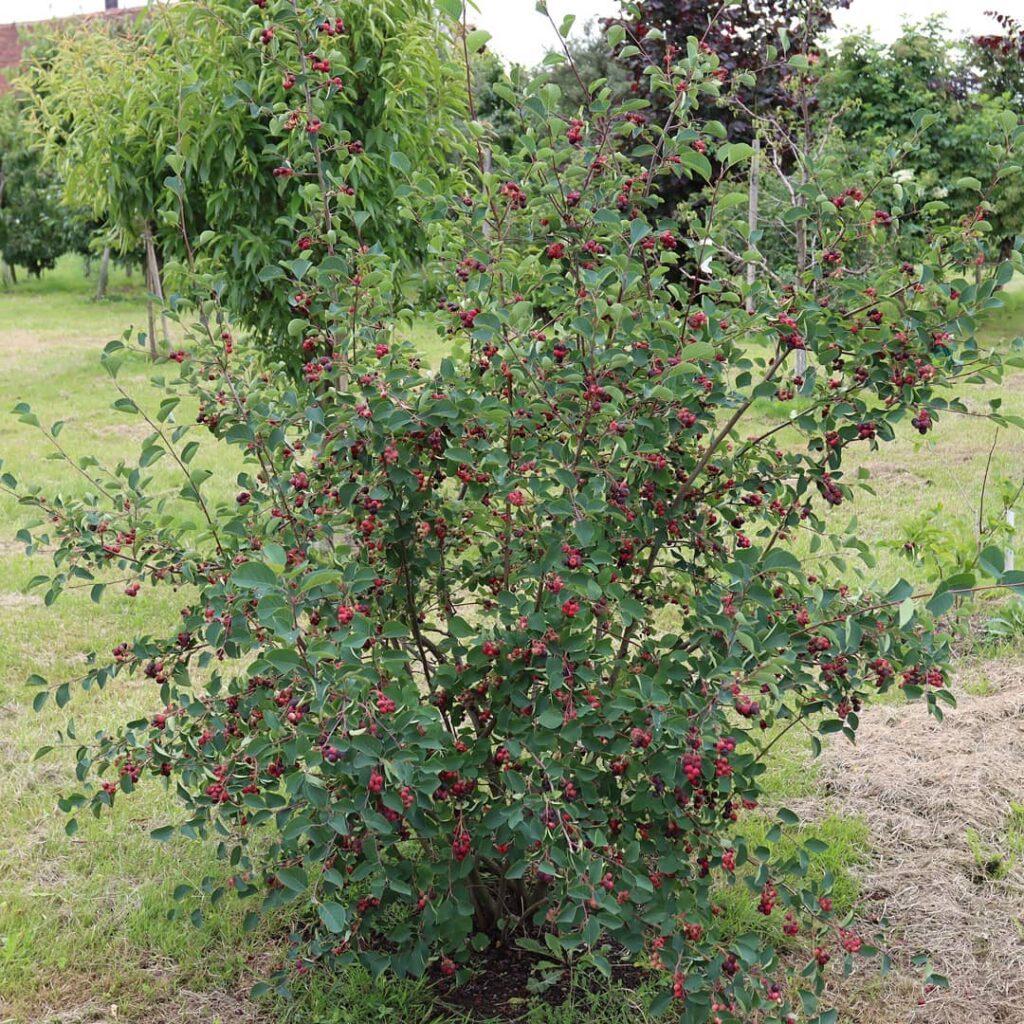
Serviceberry (Amelanchier alnifolia), also known as Western serviceberry or saskatoon, is a versatile native shrub perfectly adapted to Eastern Oregon’s high desert conditions. This multi-stemmed plant grows 4-12 feet tall with distinctive silver bark and reddish-brown stems. In spring, fragrant white flower clusters emerge alongside bluish-green foliage, followed by sweet, nutritious purple-black berries in late summer.
This drought-tolerant species provides exceptional wildlife value, supporting native pollinators with its spring blooms and feeding numerous bird species with its vitamin-rich fruits. The foliage transforms to brilliant yellow-orange and red in fall, adding seasonal interest to native landscapes. Serviceberry excels in windbreaks, hedgerows, and erosion control plantings. This hardy plant is now considered an emerging horticultural crop in the upper midwest and Canadian prairies due to its valuable fruit production.
- Hardiness: Zone 4, well-suited for Eastern Oregon’s climate extremes
- Light: Full sun to partial shade for ideal growth and flowering
- Water: Drought-tolerant once established, requiring minimal supplemental irrigation
- Soil: Adaptable to various soil types, but avoid heavy clay conditions
- Fertilizer: Low maintenance, thrives without regular fertilization in native soils
- Pest/Disease Resistance: Generally resistant with few significant pest or disease issues
- Growth Rate: Moderate growth rate, reaching mature size over several seasons
Oregon Grape (Mahonia Aquifolium)
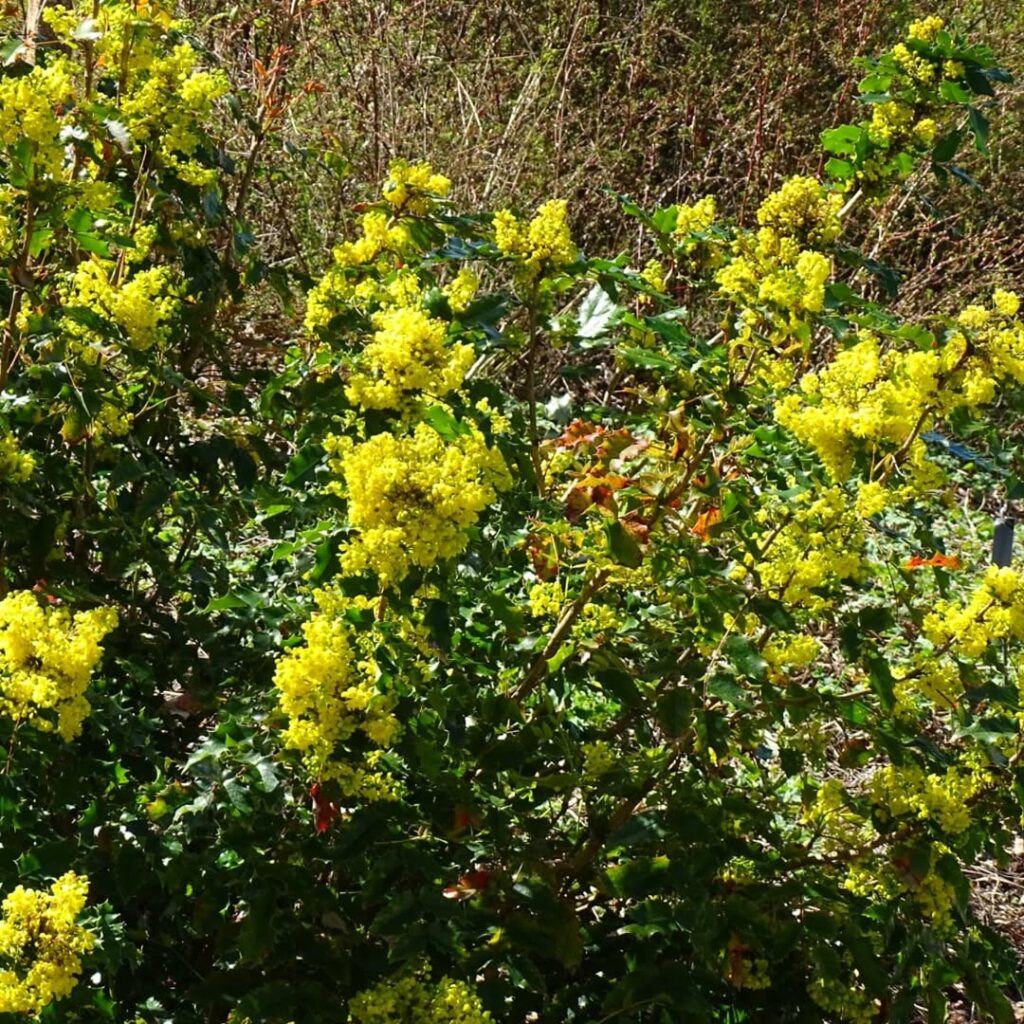
Oregon Grape (Mahonia aquifolium) is an evergreen shrub native to the Pacific Northwest that serves as Oregon’s state flower. This holly-like plant grows 3-10 feet tall with compound leaves featuring spiny margins and an upright growth habit. In spring, it produces clusters of bright yellow flowers followed by dark blue berries with a silvery bloom. The foliage changes color seasonally, appearing bronze when new and turning purplish-bronze in winter while remaining evergreen year-round.
This versatile shrub excels in mass plantings as hedges or screens and offers an attractive alternative to traditional holly in southwestern landscapes. Its rhizomatous root system allows it to spread naturally, creating dense colonies over time. The plant is virtually pest and disease-free, making it exceptionally low-maintenance for gardeners. The distinctive architectural form of its irregular stems, combined with wildlife resistance and moderate water needs, makes Oregon Grape an excellent choice for sustainable Eastern Oregon landscaping.
- Hardiness: USDA Zone 5
- Light: Partial to full shade
- Water: Moderate; water when top 2 inches of soil is dry
- Soil: Well-draining, adaptable to various soil types
- Fertilizer: Low requirements, typically none needed
- Pest/Disease Resistance: High resistance to wildlife herbivory
- Growth Rate: Moderate, spreading via underground rhizomes
Snowberry (Symphoricarpos Albus)
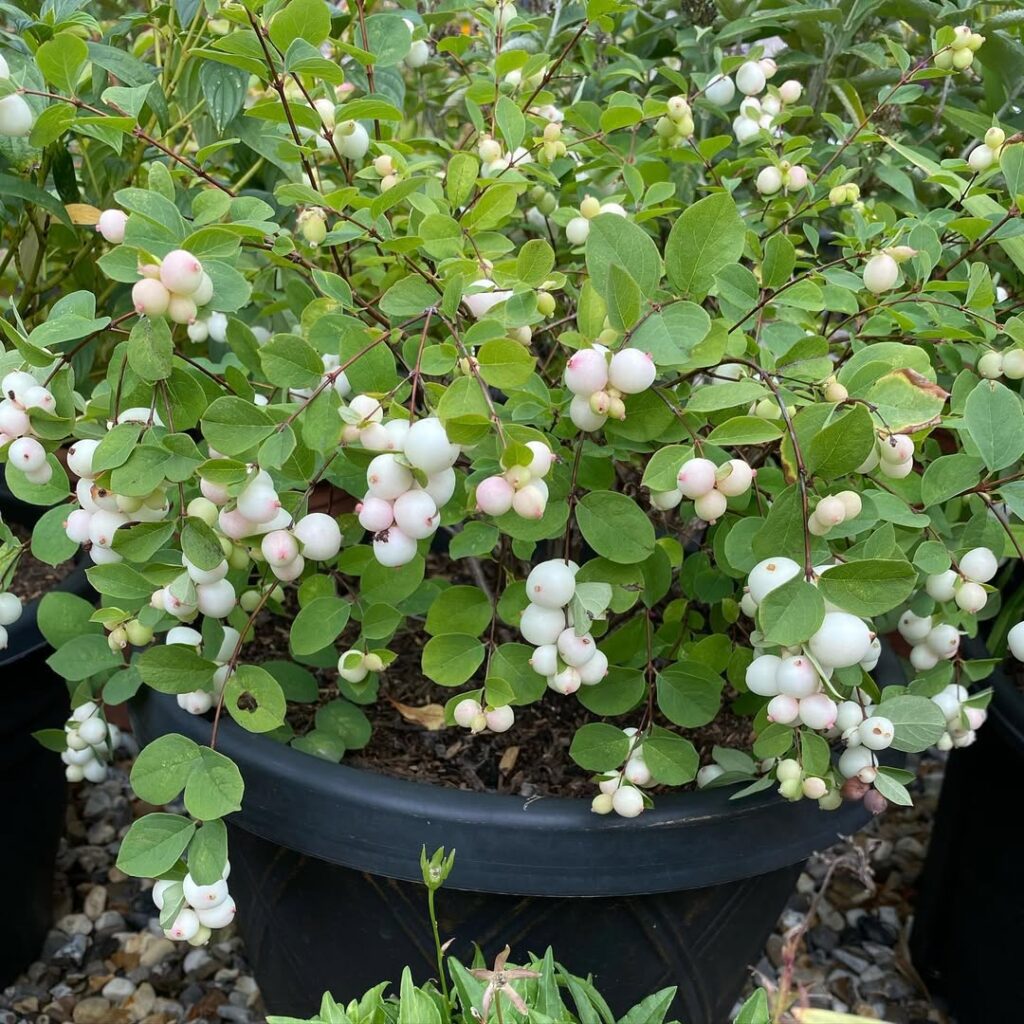
Snowberry (Symphoricarpos albus) is a hardy deciduous shrub native to Oregon that grows 1.5-7 feet tall with a broad, rounded form. This adaptable plant produces small pink-white bell-shaped flowers followed by distinctive white berries that persist through winter, providing excellent wildlife habitat and visual interest.
Extremely tolerant of harsh conditions, Snowberry thrives in poor soils and withstands drought, neglect, and urban pollution once established. It spreads by suckers to form natural thickets and was once popular in traditional dooryard gardens. The plant’s hollow stems and persistent berries make it valuable for wildlife, while its aggressive root system helps stabilize steep embankments. The species has two varieties distributed across different regions, with var. albus found in eastern North America and var. laevigatus native to the Pacific slope.
- Hardiness: USDA Zone 3, excellent cold tolerance
- Light: Full sun to full shade, very adaptable
- Water: Drought tolerant once established, tolerates wet conditions
- Soil: Prefers heavy clay but adapts to various soil types, tolerates poor soils
- Fertilizer: Low requirements, benefits from spring fertilization for larger berry clusters
- Pest/Disease Resistance: Susceptible to anthracnose, rusts, powdery mildew, and berry rot
- Growth Rate: Moderate, spreads by suckers to form 4-6 foot wide thickets
Selecting the Right Native Plants for Your Garden
When you’re choosing native plants for your Eastern Oregon garden, you’ll want to match each species to your specific growing conditions rather than simply picking the most attractive options. Effective plant selection strategies begin with evaluating your soil type, water availability, and sun exposure.
Red-osier dogwood adapts to various soils but needs medium to high water, while golden currant thrives in well-drained, organically rich conditions with minimal irrigation. For sunny, dry spots, consider blueblossom or bitterbrush.
Native plant benefits include reduced maintenance, wildlife habitat creation, and ecosystem support once established. These plants are naturally adapted to local climate and soil conditions, making them particularly well-suited for the region’s unique environment.
Frequently Asked Questions
What Is the Best Time of Year to Plant Native Species?
You’ll find fall planting works best for native species, from late September through early November. Spring planting requires careful seasonal considerations, especially timing transplants after your area’s frost-free date for ideal establishment.
How Much Water Do Established Native Plants Need During Summer?
You’ll achieve excellent water conservation with established native plants, as they need minimal summer irrigation – typically just twice monthly watering at most, with many thriving on no supplemental water during dry months.
Where Can I Purchase Native Eastern Oregon Plant Seeds Locally?
You can’t find many local nurseries carrying native eastern Oregon seeds, so you’ll need specialized online suppliers like EcoSource Native Seed or Native Seeds of Oregon for authentic regional varieties.
Do Native Plants Require Special Soil Preparation or Fertilizers?
Most natives don’t need special soil amendments or fertilizers since they’re adapted to local conditions. You’ll want basic soil preparation like tilling and adding compost for proper native plant care and establishment success.
How Long Does It Take for Native Plants to Become Established?
Planning your native garden timeline? You’ll typically wait 1-3 years for full establishment period, with perennials showing strong plant growth in year one while shrubs need two or more years.
